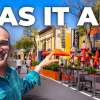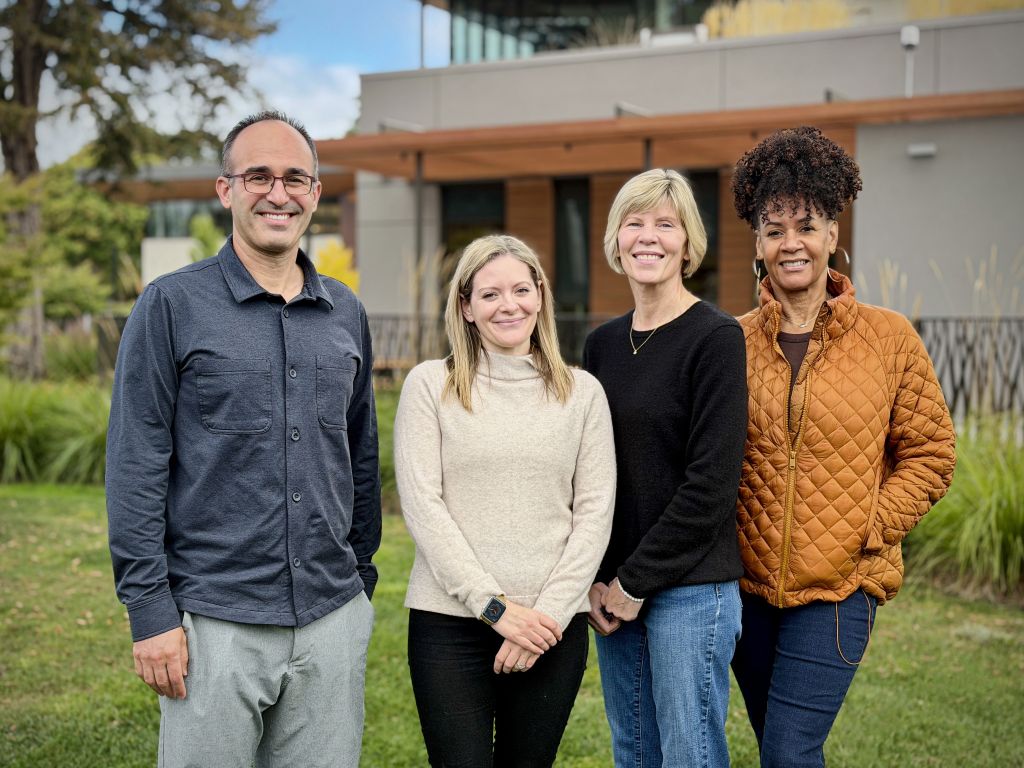650 Stories: An interview with Joe Pessano
Joe Pessano is a strength and conditioning coach who has trained clients ranging from elite athletes to sufferers of strokes, Huntington’s disease, and everything in between. He applies patience, compassion, and understanding to his practice. His desire is to help everyone achieve the highest possible level of spirit, body and mind. In his work, he challenges preconceived ideas of what can be accomplished, believing that a person moves a mountain one pebble at a time. He’s written a book called Harmonious, dedicated to people who want to understand their mind, conquer their fear, and live the life they’ve always desired. The book includes tried and true strategies for defeating anxiety, depression, healing family wounds, strengthening relationships and communication.
Can you tell me what you do?
I’m a strength and conditioning coach. I essentially help people move better, overcome thought patterns they believe that aren’t true.
Give me an example of a thought pattern like that.
Let’s say someone walks in and they’re 50 years old, and I want to show them a proper squat where they go all the way down with their butt on the ground. But they’ve been told by their doctor that it’s bad for their knees. What the doctors don’t tell them is that when their knees get to ninety degrees, that’s when the knee experiences the greatest amount of sheer force. We don’t want to stay there, we want to pass through that. I explain it to them and they don’t believe me because they’ve been told this other way. So I create movement patterns. I have them do an exercise, but I don’t tell them it’s a squat. We may be sitting on a bench, and they walk their hands out like a caterpillar, walk their hands back, and sit down. At the end I ask them if they noticed anything and they don’t. They say, ‘I didn’t even think about my knees.’ Of course they didn’t because the natural body wants to do as much full range movement as it can.
If you look at countries where they squat for rest and relaxation, and eat squatting, that should tell us that it’s part of our natural movement pattern. So when someone comes in with that kind of idea in their head, I sneakily try to show them that it’s possible.
Do you feel that when people come to you they have ideas about what they can and can’t do?
Oh yeah. I have to get them to try to change the language they use, like ‘I can’t do this.’ A lot of people think anything but this when they come. If I’m not able to help them change that, then it doesn’t work. I’m trying to change their habit. The cool thing is by approaching the mind first, you can help change their outlook. They might start accidentally catching themselves in an old habit. That’s when I start celebrating. The women who want to do pull ups are doing pull ups. They thought they could never do it. But once they do their first one their face lights up.
Part of it is how we are trained as women, in terms of what we believe we can and can’t do.
I wish we would change the language from girl push-up to modified push-up. Any trainer or strength coach who has any merit to their skill level would never call it a girl push-up again. That’s an ego thing. I have destroyed many a man with push-ups on the knees.
So how did you come to find yourself in this work? What drew you to it in your life?
I’m a firm believer of testing the paths. So for a long time I was in the service industry, bartending, waiting tables, managing, all that fun stuff. What was really interesting was that those jobs offered me the ability to test other paths. Which is really neat. So I tried some other paths while still working and nothing was really clicking for me. I started working as a real estate appraiser and it was enjoyable because I could drive, listen to music, and I didn’t have a boss. But then I started having nightmares of me flying through the windshield. Not just crashing through, but flying through and dying. It was very vivid to the point where I wasn’t sleeping anymore and I had trepidation in the car because it was so real and so vivid. So I told the people I worked with that I didn’t think it was for me. As soon as I stopped the nightmares went away. I’m a firm believer in paying attention to those kinds of things. My fiance at the time, who is not my wife now, had suggested to go to personal training school. A mutual friend of ours suggested that she should go, and she went. And I went with her. It was during the day and I could still work at night. I was never a fan of school, but as soon as I started going to this training school, I was geeking out. I was totally into it. I was like, ‘Are you telling me I can get paid to tell people to do push-ups? Come on!’ Everything started to make sense to me. At the time, I was definitely partying hard and that had to go to the side. I realized that if I kept going down that lifestyle I’m doomed faster than I’m normally going to be doomed. So then I decided to go the other direction.
What was the beginning of that career change like?
At first I had a lot of athletes that I was training. But because I was good at helping people with injuries, I started to get more of those clients. I liked the challenge. Elite athletes are the easiest to train because they can do everything. The ones who are harder to train are the ones who can’t. The ones who are in a wheelchair, or stroke victims. They’re the ones who really need the help. I continue to do that kind of work to this day.
What was your relationship to fitness in your own body, and how did this work change that for you?
My mom is a professional astrologist. We would go to gypsy fairs, and I was raised to question everything, and I did. Probably to her dismay she wished I hadn’t, but now it’s paid off. So the mental-spiritual path started very young. I was always trying to figure out ways to tap into that before anything external. We grew up pretty poor. You couldn’t go out and buy something to satisfy your needs. So I tried to figure out what were the things that could satisfy those needs. Then when I got to an age where I could start playing athletics, I really enjoyed playing sports. I loved the drills. Running back and forth. It’s a measurable metric. Then around 15 or 16 I started to get more into music. It was really getting me; Hendrix was calling me, and I was mesmerized. I got my first guitar. I was totally horrible which you’re supposed to be. When I went to college, I started as an art major, wanting to do transportation design. Then I changed to graphic design and finally music. From that point on I was writing music, playing music. That’s all I wanted to do. I’ve been in many bands with some amazing names: Incestial Puppies, Test Tube Chickens, Cryo Toad. The last band I was in, we had been playing for about six months, got invited to the Roxie, and broke up five minutes before we walked on stage. We played the show and then I realized that it wasn’t my path. That’s when I got into real estate appraisal.
You’ve also written a book. It seems like you’re deeply invested in not only work with the body, but also the mind and spirit. How do they connect and how do you bring that into your work?
I started really getting more excited about writing as soon as the music ended. I was in limbo for a while figuring out how to share my voice. I didn’t want to hammer people over the head, so I started on Twitter. That was my avenue, then I got on Facebook, then I got off Facebook. As I started to do more on Twitter people were telling me to write a book about strength training. I started to write, it, I tried, I went through so many different ideas, but there was nothing grabbing me. My friends who have been published told me to write about what I’m passionate about. Clearly I’m passionate about fitness but the things I tweet about were the things they told me to turn into a book. Originally I was going to put a book with photos and my tweets, but that’s absurd. So I started to realize there’s things I’ve tweeted that people might not understand that I could explain further. I started to pull the tweets that had certain meanings or ones that people didn’t get and developed those.
Some of the stuff you talk about in your book mentions that from a young age you were exposed to and brought up with an awareness about mind and spirit and the heart. Can you talk about your journey with that aspect of your life?
It wasn’t always that way. I knew the end result was there, but I didn’t know the path, and I kept choosing the wrong paths. And the wrong paths kept bringing me into depression. I kept going farther away from the path I knew I was supposed to be going on. I’d get close, veer off, lose that connection. But if I hadn’t veered as many times as I did, I wouldn’t have the appreciation for the end result of the path that I’m on. Once you get on the right path everything falls into place on its own. I really appreciate anyone who is willing to go off path even if it causes them sorrow and suffering as long as they can pull themselves back to see that they are not what they are in right now.
Can you talk about some of the things or practices you do to help cultivate mindfulness?
One of the biggest things is treating everyone as your family. When it comes to opening the door, always open the door. Even if I have to let 30 people in, and it’s okay if they don’t say thank you. That practice has generated such a beautiful radiance within it. When you are allowing yourself to be in that situation, you’re saying you’re more important than me. Then you’re waiting in line together, and those people you let in now want to talk to you. Treat everyone as if they’re your mother, father, sister or whoever you hold in the highest regard. That will allow you to open up doors of communication with people you’ve never known. That’s a mindful practice right there. The next level of a mindful practice is allowing yourself to not be reactionary to the thoughts and sensations that you’re feeling and just observe them. Not identifying. And that’s really hard. About five years ago, I was a competitive cross country mountain bike racer. I had just gotten to category 1 which is semi pro. I placed third in my first international race, and then right after that I had a terrible back injury that took me off the bike. I was training, but now I couldn’t be on the bike, but everyone identified me as someone on a bike. The way I eliminated that identification was to stop training cyclists. I had to cut off a group of people who loved being with me but identified with me as a cyclist. It was not an easy transition for myself and for them. Now, years later, we can talk about it and they can say, ‘I get it now.’ But I was in such a zone where I was always on a bike, every day. Everyone around knew I was training and on a bike. I had to walk away from that, because I didn’t want to hold onto that as my identity. It’s not my identity, it’s just something I did. If I lose my arm, I’m still Joe. That’s a really beautiful and important thing.
Do you have a lot of clients who are differently abled?
Yes many people I work with have bodies that are not functioning the way they should be, and the emotions are always heightened because they are living with their body. It’s their job to convince me what they believe, and it’s my job to help them pattern a new movement. I can see their anger, fear, frustration. The tears that start rolling and the pausing, the not moving. The brain is trying to override. The body is saying, ‘I can do this,’ but the brain is saying, ‘no you can’t.’ I always let them know it’s okay to cry, to be angry, to feel whatever they’re feeling.
It sounds like a lot of the work you do is establishing trust in the relationship.
Absolutely. In fact, the reason why the military yells at their people is weeding out the people who can’t take it. If someone is coming to me to try to fix their lives, why would I bark at them? If the person is already scared, hates the idea of a gym, and trainer, and are only there because their doctor sent them, I need to encourage them.
Injury is also a form of learning. In a way the body speaks the loudest in the end.
It totally does. The body needs. All it does is need. It needs air, water, food. It’s like a newborn. That’s the beautiful part, we’re always newborn every day.
What does being able to move give people?
Life. Movement is life. When we stop moving we are essentially dead. So I essentially am trying to help people live a better life through movement, and a little bit of knowledge here and there. There’s a time when I’m not going to be here, and I want all the people who were with me to say, ‘He taught me how to do that.’ It wasn’t just some guy pointing and saying ‘do this,’ it was someone who was teaching me. That’s what I’ve tried to do, is teach people, so they can make the best, most well-informed judgement calls about their own body.
And movement being life means you’re helping them with overall wellbeing.
Yeah, it can be something as easy as helping a 70-year-old woman, who before meeting me couldn’t reach the top bag of pretzels, now reach them. The reps in the gym, who cares? It’s when you’re in life that it counts. I love when someone says, “I’ve been able to garden for four hours without pain.” Awesome. That’s what I’m doing this for. That’s when I feel valuable.
For you, working with these people sounds like it’s also a learning experience.
My clients are my teachers, and they think I’m the teacher! I essentially wake up and go to school every day. It’s incredible. I honestly don’t feel like I’ve worked in the last 12 years. I’m not a millionaire. If you come to visit me in work I’m wearing the same outfit. I have a very simple life. I don’t need much. I’m here to help people.
Can you think of an example or story from your work that is a good example of a transformational moment?
I’ve had four this week. But one of the most memorable experiences was purely based on the relationship I built with a client. She and I had started to work together for six months and during one of our sessions, her doctor called and told her she had cancer. So we spent the rest of the session just holding each other. And she’s still my client 12 years later. She and I reflect on that moment quite frequently. We were just getting to know each other, but in this moment, human kindness was real. We were allowed to just be what we are supposed to be, loving beings. That is probably one of the biggest connectivity stories. She went from a terrible state, to almost dying, to still being here and being able to move with such vibrance.
Sometimes being there is the most important thing you can do for someone. A lot of trainers might not be able to hold that.
A lot of the people I get have been turned away from trainers, because most trainers want to just train athletes. My clients often come to me because they got turned away by other trainers. You would think that would not be a common practice but it is. These trainers aren’t coming straight out and saying they don’t want to work with them, but they get them out. I’m almost the last stop for some people. I’m taking these people in and I’m loving them. I say bring them all to me.












